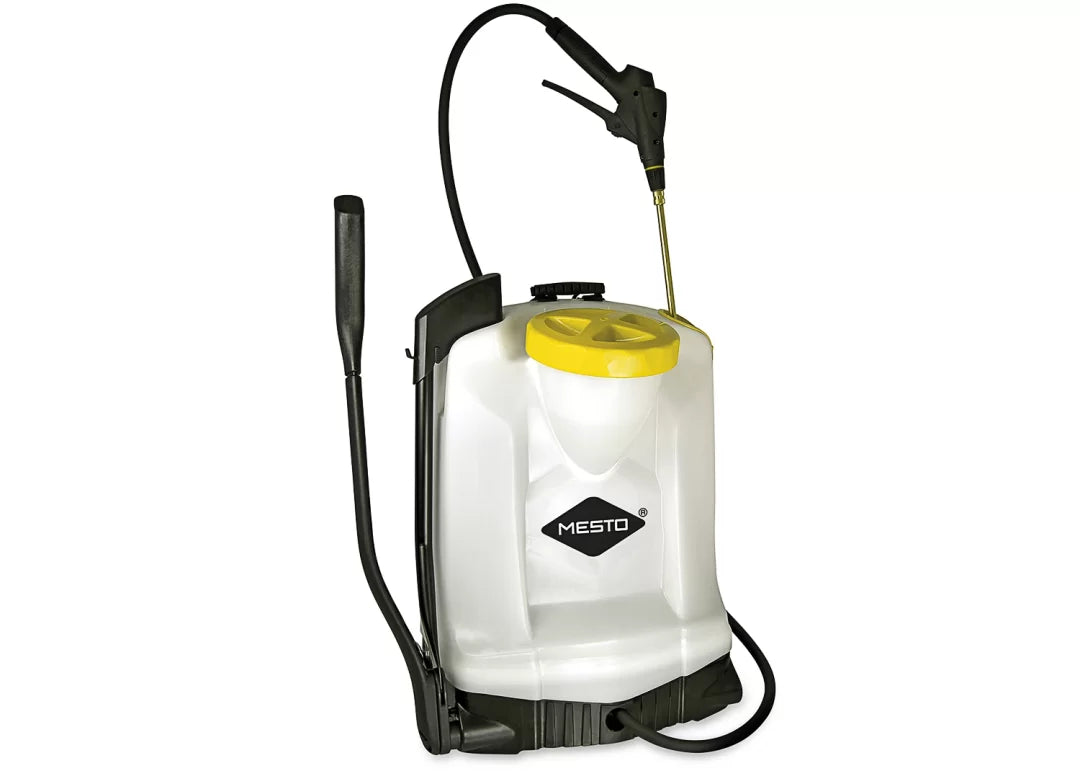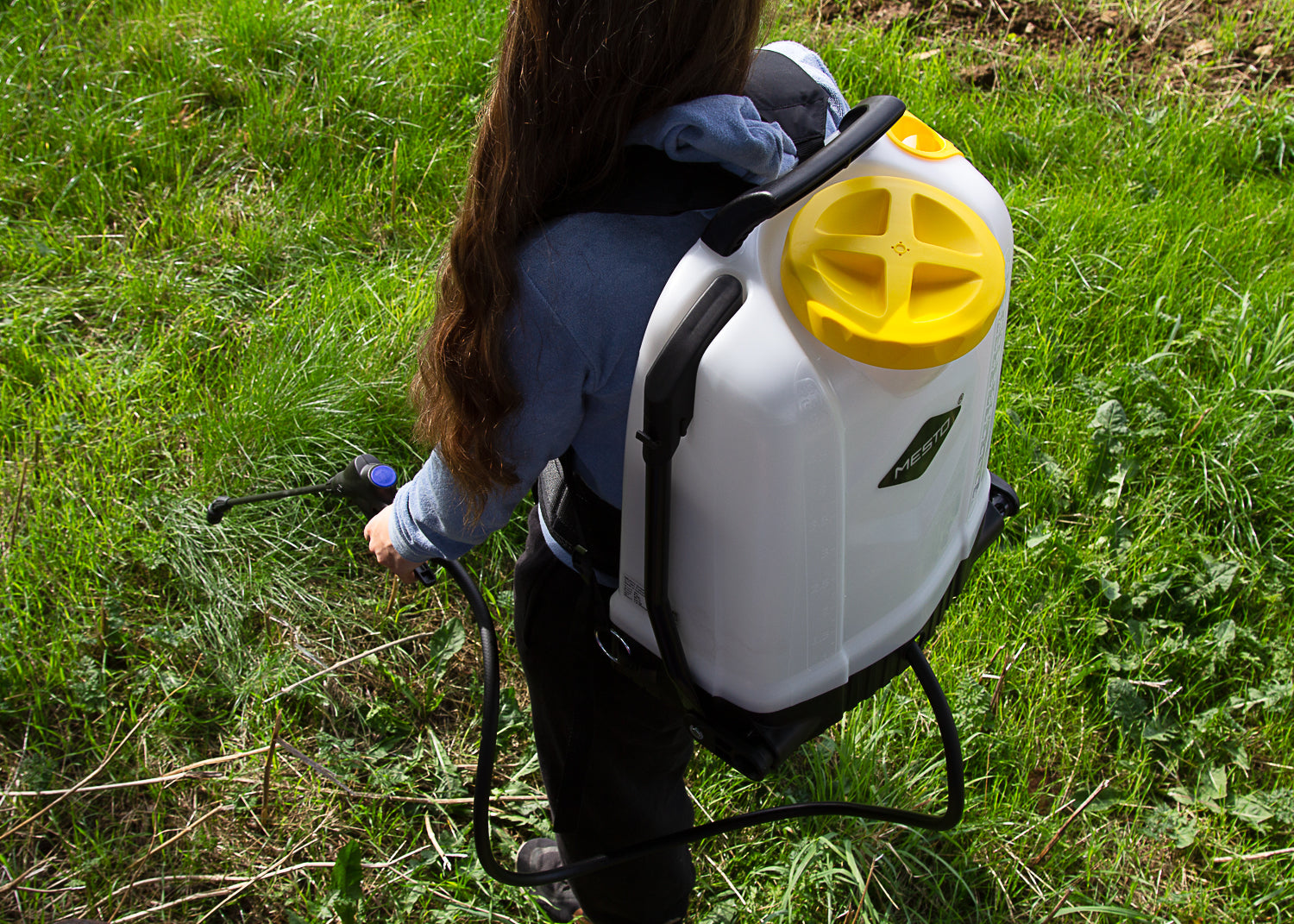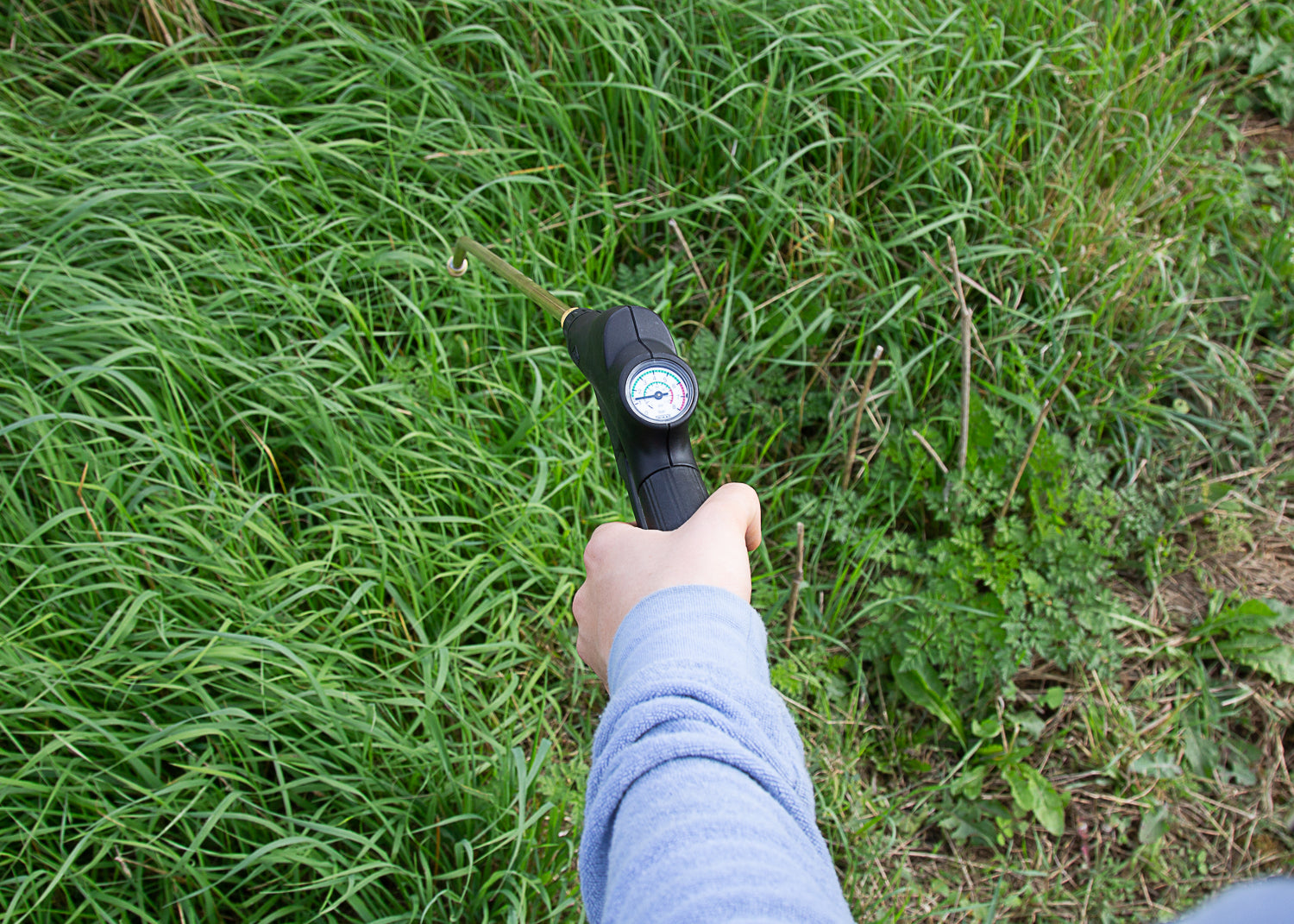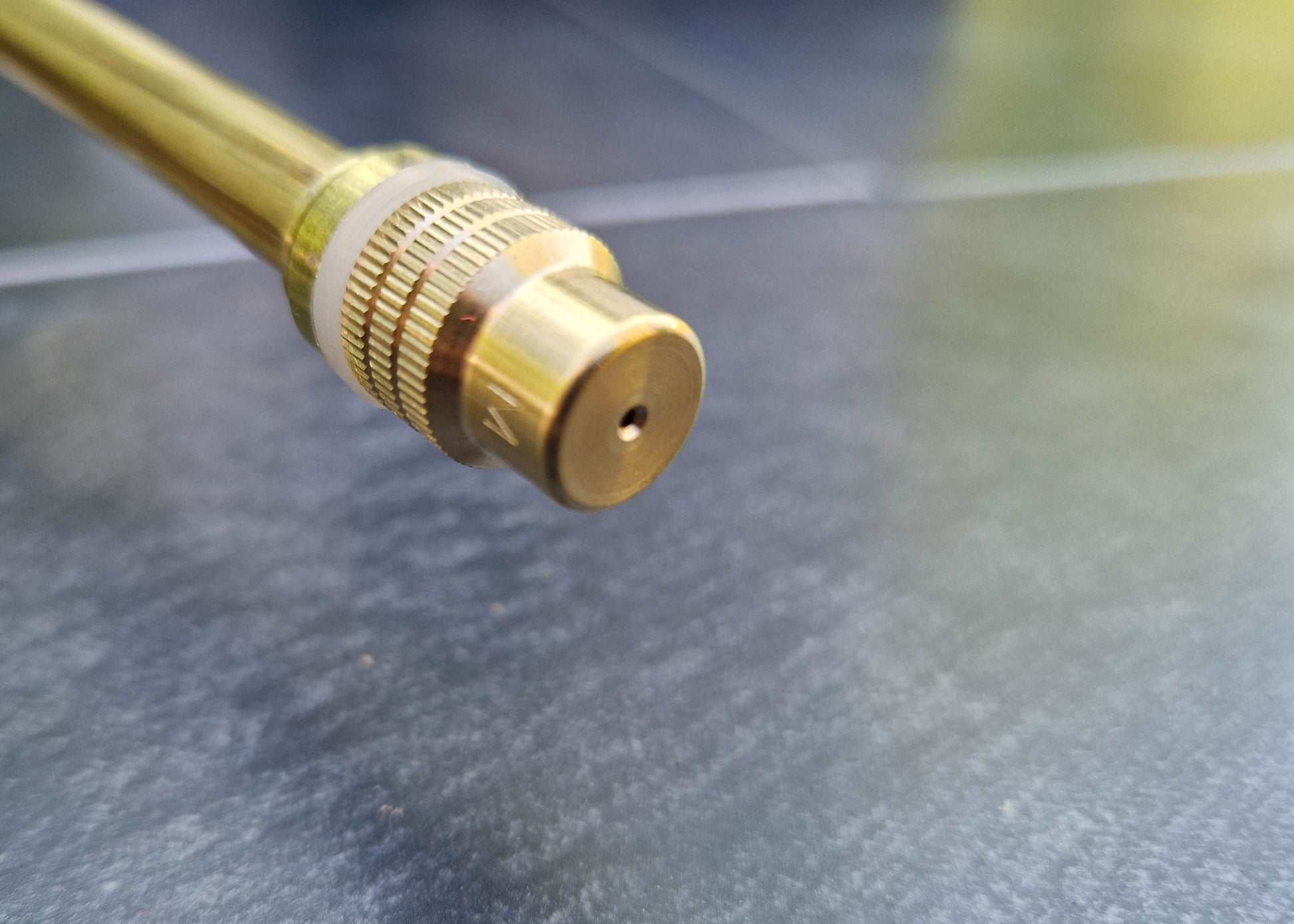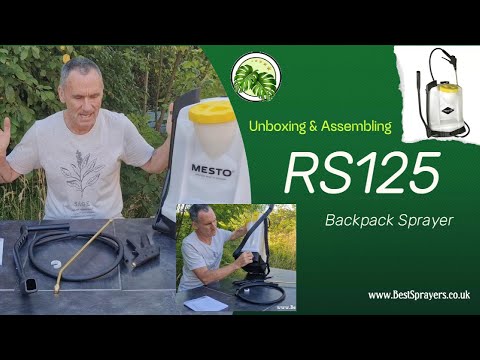RS125 - 12 Litre
RS125 - 12 Litre
SKU:0459
Knapsack sprayer with 6 BAR maximum pressure (twice the standard pressure of comparable sprayers) & FPM seals for the spraying of mild acidic and neutral chemical solutions. Built to handle heavy spraying requirements, this backpack sprayer is comfortable to wear, strong & robust.
This backpack sprayer is most suited for the application of plant protection products, fungicides and biocides so farmers, landscaping and building contractors as well as gardeners can use this unit for the spraying of all of their chemicals over large areas, and long spraying times, if needed. It can also be used with many types of neutral and mild cleaning products, both for professional cleaning contractors, builders and homeowners.
The RS range of backpack sprayers can be used with many of the accessories within our range, including the 2.5 metre telescopic lance and the longer 3.2 & 5.4 metre lances.
Couldn't load pickup availability
Share
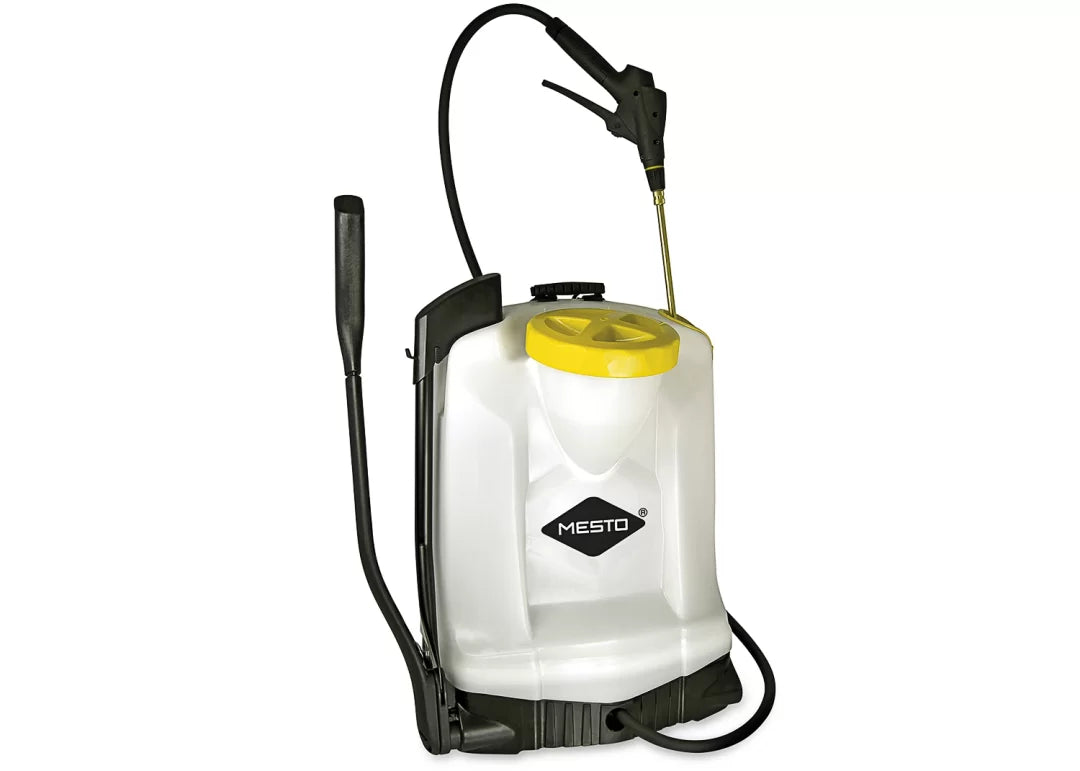
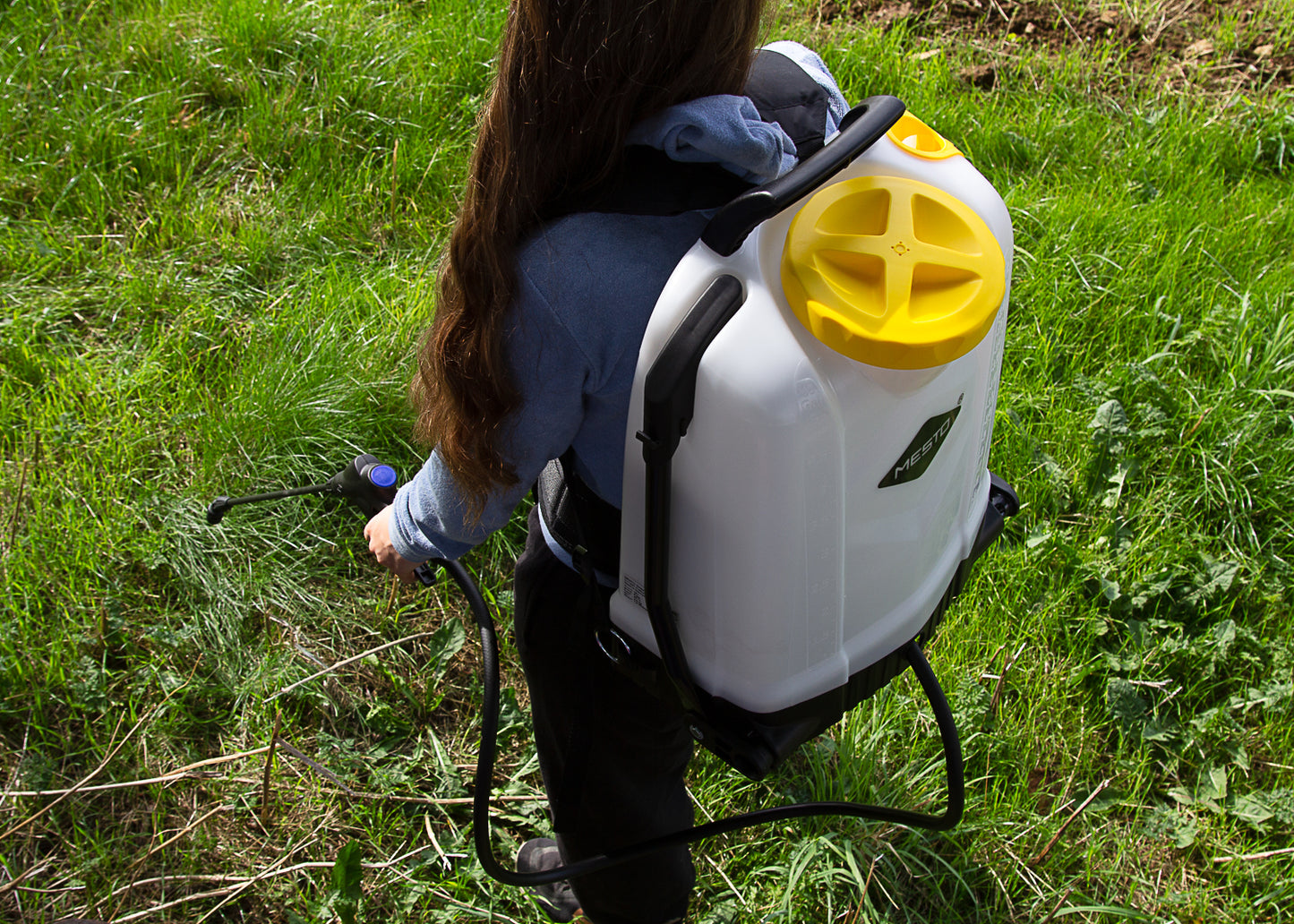
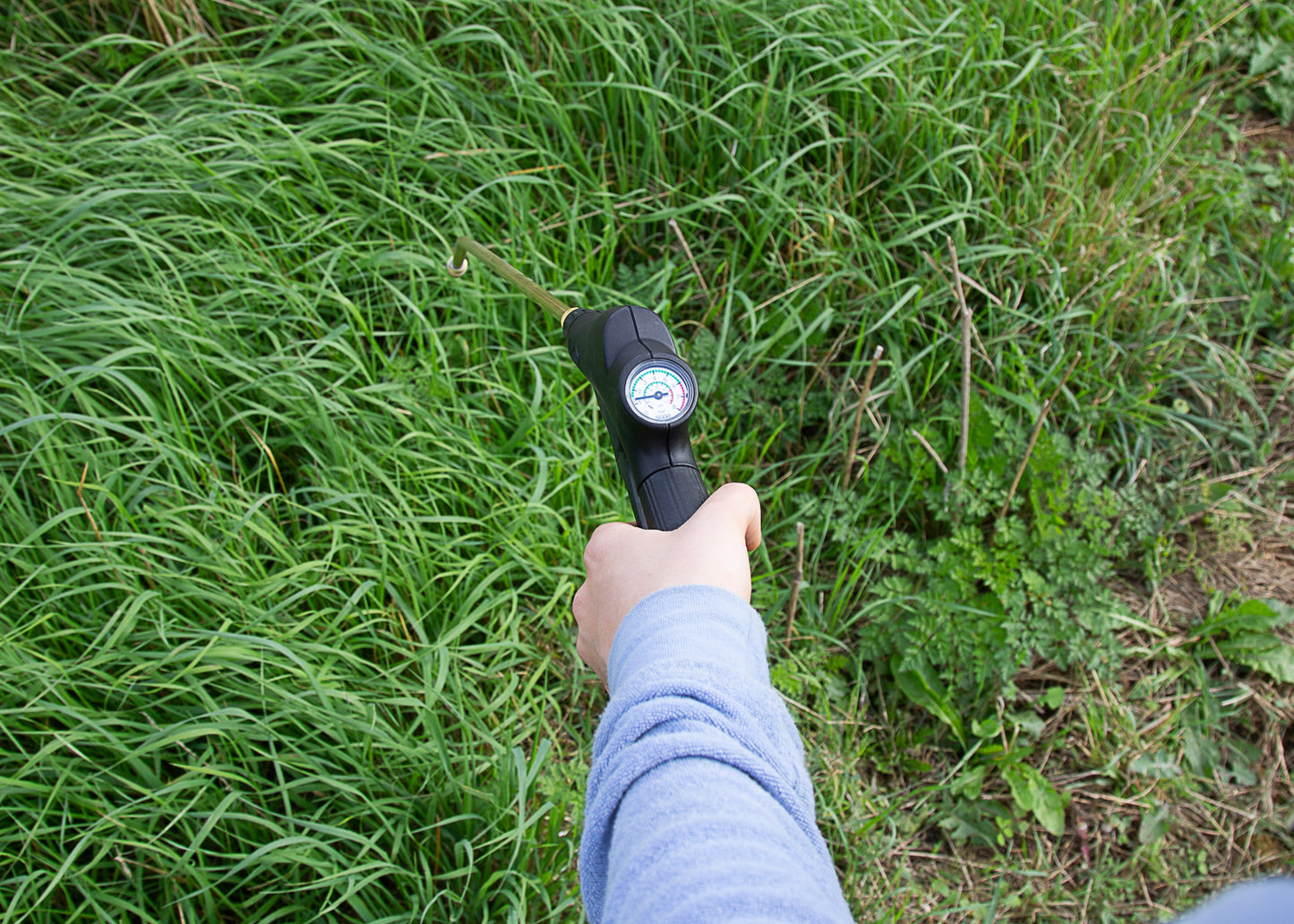
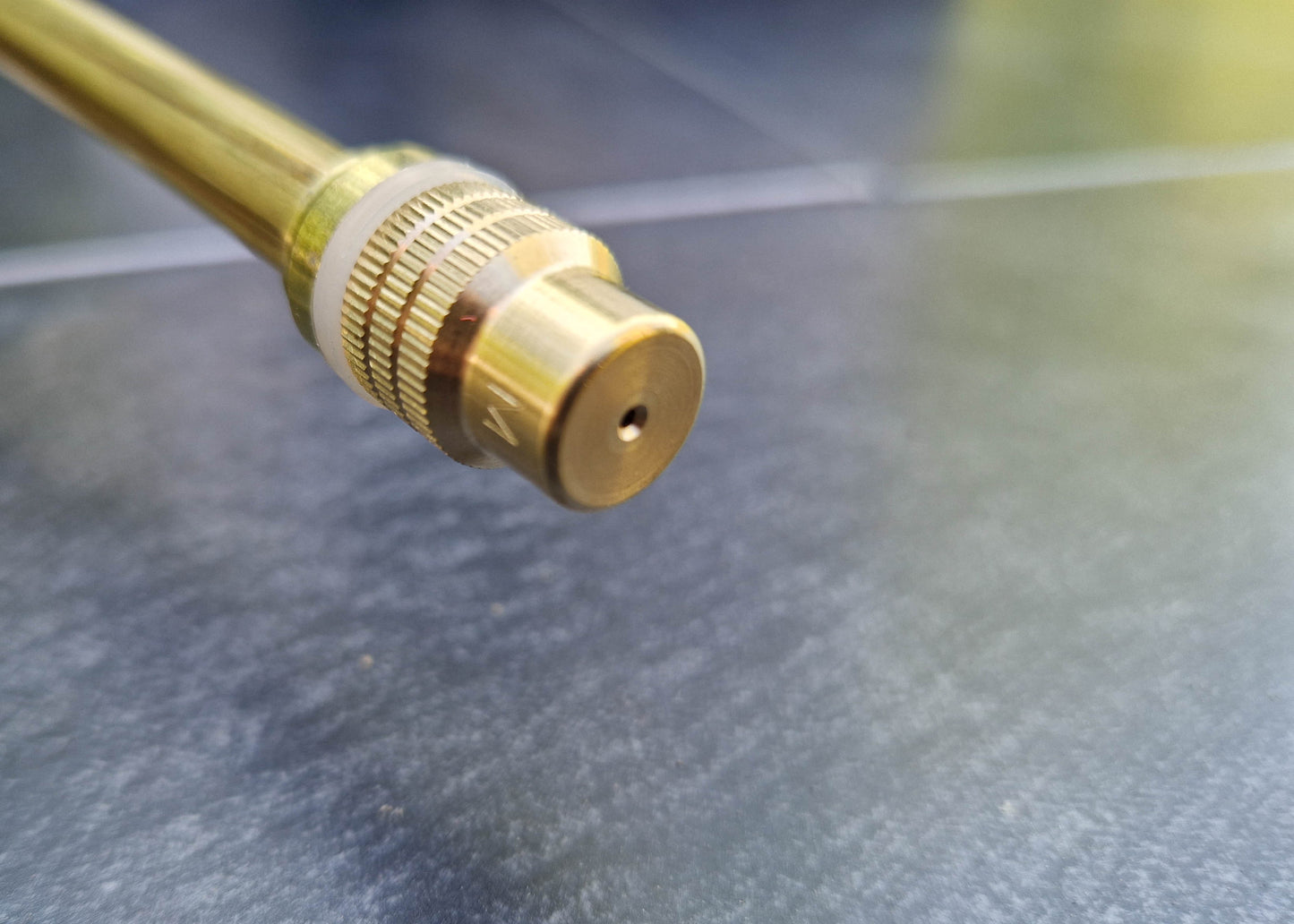
Product Description
The potentially high working pressure means that there is not the requirement to constantly pump this sprayer in order to maintain a spray pattern. This is very useful, especially when using with our long telescopic lances.
This sprayer is designed to handle very heavy workloads so you can be assured that, with a little looking after, it will meet your spraying requirements.
Special features of the product:
• Ergonomically formed shut-off valve with control pressure gauge
• Filling cap with integrated measuring cup and captive loop
• Large base: Safe stand even on an uneven surface
• Extra-large filling opening
• Ergonomically shaped integral grip that is adjustable in length
• Pump lever can be installed on left or right side
• Functional reliable spray wand holder
• Practical mounting bracket for spray shield on both sides
A review of the RS knapsack sprayers can be found in the 'Our Review' section. Simply click the tab above to read our review of the RS range of sprayers which, in addition to this sprayer, includes our 18-litre model and our brand new 18-litre model for alkaline solutions.
Whilst this prayer is fitted with FPM seals it does not mean that it can be used with all types of acidic chemical. We therefore recommend a compatibility test with aggressive chemical solutions. If you think there may be an issue with a product that you wish to use then just send us the safety data sheet (MSDS) for the product and we will check compatibility and recommend an alternative sprayer if necessary.
Product Specification
- Unit Height: 0.55m
- Unit Weight: 4.8kg
- Maximum Operating Pressure: 6 BAR (87 psi)
- Tank Working Capacity: 12 litres
- Total Tank Capacity: 14 litres
- pH Range: 1-9*
- Tank Material: Polypropylene
- Tank Ullage: 2 litres
- Carry Position: Can be carried on back
- Maximum Flow: 1.4 litres/min @ 6 BAR with supplied nozzle
- Hose: 1.5 metres, reinforced with fabric insert
- Lance: Brass, 50cm length and 360° rotatable
- Supplied Nozzle: Brass, hollow cone 1.1 mm
- Connector required when using with 3.2/5.4-metre telescopic lance
- Padded shoulder carrying straps & back padding
- 20 years spare parts supply GUARANTEED
- Seals FPM - Synthetic rubber with high elasticity properties which makes
it a very good product for the protection of seals and O-rings. FPM seals are highly resistant to hydrocarbons, oils, strong acids, aromatic and chlorinated solvents and has a high temperature resistance.
*We recommend a full compatibility test with aggressive chemical solutions. If you are unsure about a product that you plan to use then send us the safety data sheet (MSDS) for the product and we will check compatibility and recommend an alternative sprayer if necessary.
FAQs
Can this sprayer be used with all types of acidic chemicals?
Although fitted with FPM seals, we can't guarantee that this sprayer is compatible with any type of liquid just because it's an acid. Please remember that it is not just the pH that determines which sprayer can be used but the active ingredients of your chemical. We therefore recommend that if there is any uncertainty then send us the safety data sheet (MSDS) for the product you wish to use and we will check compatibility. If the product is not compatible then we will recommend an alternative sprayer for you.
What does Tank Ullage mean?
Ullage is the name given to the gap between the maximum fill and the total tank capacity. It is important with sprayers as the larger the ullage is then the more space there is for compressed air. The more compressed air you have then the longer spraying time you have before you run out of pressure. Given the design of a knapsack sprayer the ullage is not as important as with a compression sprayer which is why, generally, knapsack sprayers will have a smaller ullage to tank capacity ration than a compression sprayer.
Can this sprayer be used with your long telescopic lances?
Yes. This sprayer can be used with both our 2 metre, 2.5 metre, 3.2 metre and 5.4-metre telescopic lances. It can also be used with all of the brass lance extensions that you will find on the Extension Lances section. This backpack sprayer can also be used with our 3 Nozzle Spray Boom which is especially good when you are spraying large areas such as tennis courts, grassed areas, carparks etc. With the 3 nozzles spraying in unison, your spray pattern width is increased, by 3 times, to around 1.5 metres. This can greatly reduce the time taken to spray an area.
What guarantee do I get with this sprayer?
You get a full 12 months with mechanical breakdowns so, providing that the sprayer is being used as intended, then if something snaps you tell us and we replace the part for you. If it's damage caused by a chemical compatibility issue then we will cover the damage providing that we have confirmed the chemical compatibility with the sprayer. When it comes to the availability of spares, this is guaranteed for 20 years from the date of purchase.
What is the reason for the pressure gauge?
Pressure gauges are not a common inclusion with sprayers so are normally only available on high quality models and those designed for the spraying of non-corrosive liquids. The gauge shows the spraying pressure so how hard or fast the liquid will come out of the nozzle. Having this information allows you to match your spraying pressure to the product you are spraying. For example, if spraying many types of weed killer or moss killer the optimum pressure would be between 1 and 1.5 BAR as this produces the best droplet size. Higher pressure increases the atomisation of the liquid so reducing the droplet size and making the product less effective.
Technical Information
Chemical Compatibility
This will give you an indication of the chemical resistance of this sprayer. Next to each item you will see either YES (resistant), CON (conditionally resistant) or NO (unsuitable). This is only a guide but if you can't see the chemical you plan to use or have any questions then please just contact us.
Acids
- Acetic Acid (maximum 10%): NO
- Silicic Acid: YES
- Peracetic Acid (maximum 6%): YES
- Phosphoric Acid (maximum 30%): YES
- Nitric Acid (maximum 10%): CON
- Hydrochloric Acid (maximum 10%): CON
- Aulphuric Acid (40%): CON
Alcohol
- Butanol: CON
- Ethanol: NO
- Methanol: NO
- Isobutanol: YES
- Isporopanol: YES
Aliphatic Hydrocarbons
- Decane: CON
- N-Heptane: CON
- N-Butane: CON
Aromatic Hydrocarbons
- Naphtha: YES
- Toluol (maximum 40%): YES
- Xylene: YES
- Heptaphene: YES
Oils
- Diesel: YES
- Kerosene: YES
- Mineral Oil: YES
- Petroleum Spirit: NO
- Concrete Release Agent: YES
Alkalines
- Acetone: NO
- Ammonia: NO
- Sodium Carbonate: YES
- Sodium Hydroxide (maximum 30%): NO
- Potassium Hydroxide: NO
- Sodium Hypochorite (maximum 12.5%): CON
Various
- Weed Control: YES
- Moss KIller: CON
- Forestry: CON
- Release Agents: CON
- Lawn Care: YES

